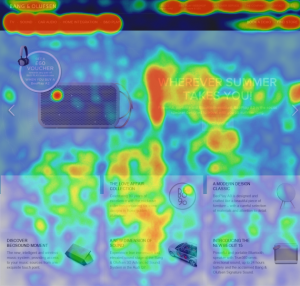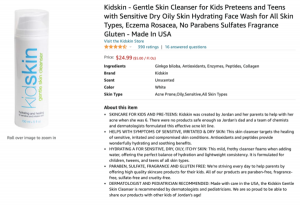(October 16, 2015), The New York Times ran a piece by Ashley Parker entitled Digital Ads Sell Candidates and Causes, in 15-Second Bursts. Because the story focuses on the increasing effectiveness of digital ads, we wanted to take a closer look. Let’s highlight the most interesting points and see what lessons can be applied to everything from campaign spots to whiteboard explainer videos.
In the attention-deficit era of politics…campaigns and the groups supporting them are devoting significant resources and energy to the micro ads that dominate the digital landscape.
Although several of the quotes that we’ve highlighted are set through a prism of politics, much of the information contained is relevant to the digital landscape in general. In particular, the push towards micro advertisements speaks to the construct of a new marketing reality that’ll be here to stay.
“It’s incumbent upon us as ad makers to adapt as the format changes as well, and not just adapt in terms of reducing the length of an existing video, but actually rethink the creative and express the message in a new way,” said Josh Sharp, the chief creative officer at Harbinger Outreach, a Republican events and marketing firm.
Two things stand out here:
- 1) The use of the word “incumbent” hammers home that when faced with a new landscape marketing strategies, evolution isn’t really a choice; it’s a necessity.
- 2) “Rethink the creative” is the key. The message itself need not be altered, but the way that you deliver that message is where the focus must be paid.
Facebook says that more than 50 percent of its daily active users in the United States watch at least one video on the site every day, and Google tells clients that by 2018, 84 percent of all Internet traffic will be for video…According to an August report by Borrell Associates, an advertising research firm that tracks media trends, digital ad spending is expected to top $ 1 billion for the first time in 2016, an increase of nearly 700 percent from 2012, when it reached roughly $ 160 million.
Wow, just wow. And statistics such as this will likely only become more prevalent and jaw-dropping. The times, they are a changin’.
“Ultimately advertising will always go to where the voters are…”
This may seem like a somewhat obvious statement, but it’s one worthy of reminder. Whether you’re targeting voters, potential consumers, employees or any other group, it’s import to think hard about—and continuously track—where they are and the best place to deliver your message.
To this point, there’s a comment that touches on this later in the piece: “On YouTube, we can target directly to a congressional district or a state or a metropolitan area,” said Lee Dunn, who leads the elections team at Google, which owns YouTube.
There is more inventory for shorter online ads, making them easier and cheaper to snap up.
Remember: digital marketing is an industry and the principles of supply and demand prevail. At this point, while we’re only at the beginning of this trend, there appears to be a larger inventory of shorter ad spaces, so they could be had at cheaper prices. So, it would seem, now’s the time to strike.
The completion rate for well-produced digital ads is often higher than for their television counterparts.
With any advertisement—be it digital, print, radio or whatever—you’re always asking someone for their time. And since people generally don’t like to give up their time, it would stand to follow that the less time you’re asking for, the better your chances. Now, while this may be true in theory (and, to some degree, in practice) the downside of having shorter time is that it’s harder to craft “well-produced digital ads.” So make sure that quality still comes first, even if the quantity of your time is decreasing.
“You have a lot more time in a TV ad to present a hook to capture a viewer, but in the social space, it can be milliseconds,” said Matt David, a strategist for New Day, the super PAC supporting Gov. John R. Kasich of Ohio, a Republican.
Piggybacking on our previous point—about the downside of shorter advertisements—another problem that comes with micro advertisements is that it gives you less time to connect with the viewer. With micro ads, the clock starts ticking immediately, to the point where it is almost necessary to hook the viewer right away. What will be your hook? What is memorable and exciting that can draw viewers in? There are plenty of answers to this, but it’s all about finding the best one.
No single formula exists…
Don’t ever forget that, for both the good and the bad. Don’t try to mimic something that worked because the reason it worked is likely due to many variables. And don’t feel pressured to craft digital advertisements in a specific way to meet some assumption of expectations. There are no hard-and-fast rules when it comes to making digital videos; use that freedom to create something you’d want to see if you were a viewer.
On Facebook and Twitter, videos begin to play automatically, but without sound, which makes attention-grabbing visuals critical. And on Snapchat, the best spots often mimic the authentic, raw and humorous feel of other Snapchat videos.
Facebook and Twitter have improved their video integration this past year and this is certainly a good thing. But don’t fall into the trap of believing that Facebook and Twitter are the only things. Yes, they are the biggest social media platforms, but there are plenty of others worthy of attention (i.e. Snapchat, Instagram, Linkedin, etc.) and, without a doubt, there will be plenty more that we haven’t even heard of yet.
Another video — released on Facebook, Twitter, Snapchat and YouTube — featured Mr. Paul taking a chain saw and a wood chipper to the tax code, and underscored the new role of online advertising, both as a growth area for politics and a virtual sandbox for experimentation and even playfulness.
The video here speaks mostly for itself—and showcases an intersection of many topics touched upon above. Just one tiny thing worth adding, in the form of a quote from Paul’s chief digital strategist Vincent Harris: “That is part of the blessing and the curse of the actual ad format online…If you are not piquing people’s interest, they are just skipping.”
Digital & Social Articles on Business 2 Community
(93)






